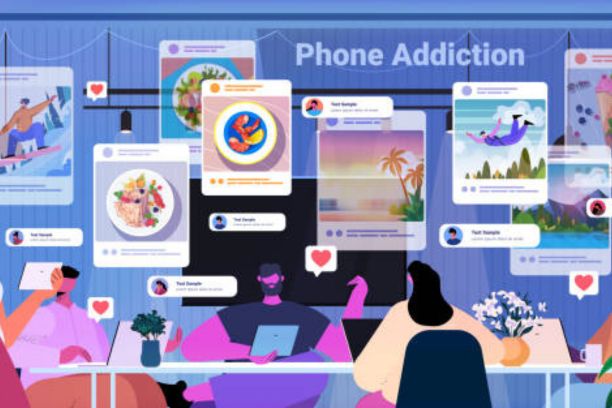Introduction:
How to post to multiple Facebook groups? Facebook groups are offering a powerful platform for engaging with like-minded individuals, sharing content, and building communities. However, manually posting to multiple groups can be time-consuming and inefficient. In this article, we’ll explore various methods and best practices for posting to multiple Facebook groups effectively.
10 Tips for Efficient Posting Across Multiple Facebook Groups
Create a posting schedule:
Establish a consistent posting schedule to maintain regular engagement without overwhelming your audience. Plan your content calendar in advance, considering factors such as peak activity times and the specific interests of each group exploring with xplorermaster.com.
Segment your audience:
Organize your Facebook groups into segments based on demographics, interests, or engagement levels. Tailor your content to resonate with each segment, ensuring relevance and maximizing engagement.
Utilize Facebook’s built-in tools:
Take advantage of Facebook’s built-in features, such as post scheduling and group lists, to streamline your posting process. Schedule posts in advance and create lists of relevant groups for easy distribution.
Leverage third-party tools:
Explore third-party tools like Hootsuite or Buffer that offer advanced scheduling and management capabilities for posting to multiple Facebook groups simultaneously. These tools can save time and improve efficiency.
Personalize your content:
Avoid the temptation to copy and paste the same content across all groups. Personalize your posts to cater to the unique interests and preferences of each audience, increasing relevance and engagement.
Monitor Engagement:
Regularly monitor engagement metrics such as likes, comments, and shares to gauge the effectiveness of your posts. Adjust your strategy based on performance data to optimize results over time.
Engage with Group Members:
Foster meaningful interactions by actively engaging with members of each Facebook group. Respond to comments, answer questions, and participate in discussions to build rapport and establish credibility.
Respect Group Guidelines:
Adhere to the rules and guidelines of each Facebook group to maintain a positive reputation within the community. Avoid spammy or promotional content and prioritize adding value to group discussions.
Explore various methods and best practices for posting to multiple Facebook groups:
Diversify Your Content:
Experiment with different types of content, such as videos, images, or polls, to keep your audience engaged and entertained. Variety helps maintain interest and encourages participation.
Measure and iterate:
Regularly evaluate the performance of your posts and adjust your strategy based on insights gained. Experiment with posting times, content formats, and messaging to identify what resonates best with your audience.
Understand Facebook Group Policies:
Before posting in multiple Facebook groups, it’s crucial to familiarize yourself with each group’s rules and guidelines. Respect the group’s purpose, avoid spamming, and adhere to posting frequency limits to maintain a positive reputation within the community.
Use Facebook’s built-in tools:
Facebook provides features to streamline posting across multiple groups simultaneously. To do this, navigate to the group’s homepage, click on the “Write something…” box, and select “More options.” From there, you can choose to post in multiple groups at once by selecting each group or using predefined lists.
Create lists for easy posting:
Organize your Facebook groups into lists based on interests, demographics, or engagement levels. Lists make it convenient to target specific audiences and tailor your content accordingly. To create a list, go to the Groups section on the left sidebar of your Facebook homepage and click “Create List.”
Schedule posts in advance:
Maximize efficiency by scheduling posts to multiple groups in advance. Facebook’s scheduling feature allows you to plan your content calendar, ensuring consistent and timely posting without the need for manual intervention. Simply click on the drop-down arrow next to the “Post” button and select “Schedule Post.”

Utilize third-party tools:
Several third-party tools offer advanced features for managing and automating Facebook group posting. Tools like Hootsuite, Buffer, and SocialPilot allow you to schedule posts, track engagement, and analyze performance across multiple groups from a single dashboard. Evaluate different tools to find the one that best suits your needs and budget.
Customize Content for Each Group:
Avoid the pitfall of posting the same content across all groups without customization. Tailor your posts to resonate with the unique interests and preferences of each group’s members. Personalization fosters engagement and increases the likelihood of your content being well-received.
Monitor and engage:
Posting in multiple Facebook groups isn’t just about broadcasting your message—it’s also about fostering meaningful interactions. Monitor your posts for comments, questions, and feedback, and be proactive in responding and engaging with group members. Building genuine connections strengthens your presence within the community and enhances your credibility.
Analyze performance and iterate:
Regularly evaluate the performance of your posts using Facebook Insights or analytics tools provided by third-party platforms. Identify trends, analyze engagement metrics, and adjust your posting strategy accordingly. Experiment with different posting times, content formats, and messaging to optimize your results over time.
Conclusion:
Utilizing multiple Facebook groups can significantly enhance your online presence, foster engagement, and cultivate connections with your audience. By implementing the strategies outlined in this guide, such as leveraging Facebook’s features and third-party platforms, you can streamline your posting process and amplify your content’s reach. Always prioritize authenticity, relevance, and ongoing engagement to nurture strong relationships and drive sustained success in your online community endeavors.
